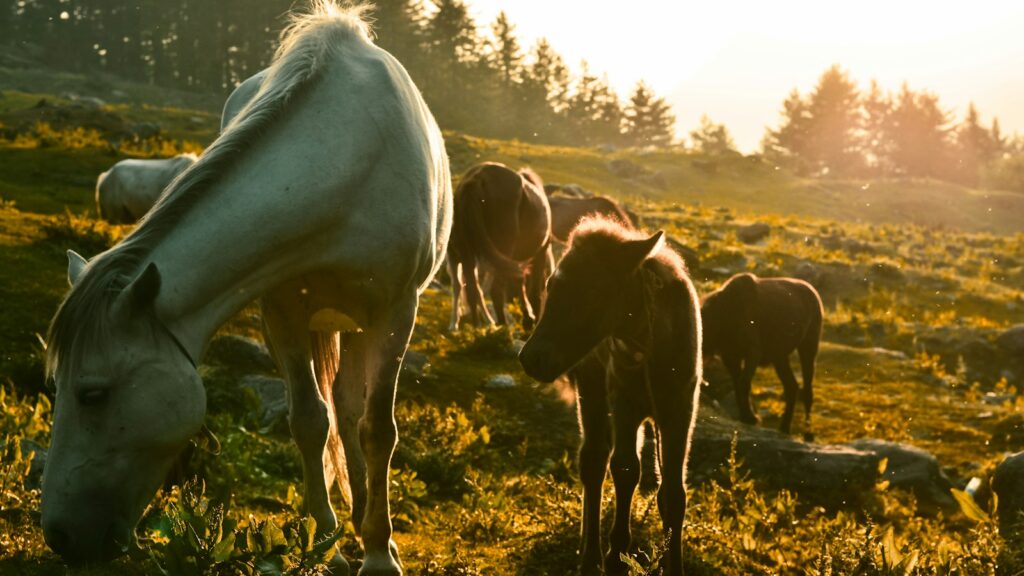The first weeks and months of a foal’s life represent a critical window for socialization and training that will shape their future interactions with humans. While these young equines are naturally curious, they’re also flight animals with instinctive wariness of potential threats. Establishing a foundation of trust through proper handling techniques not only creates a safer environment for both handler and horse but also develops the groundwork for a lifetime of positive human relationships. From those magical first touches to establishing essential handling routines, introducing your foal to human interaction requires patience, consistency, and knowledge of equine psychology. This comprehensive guide will walk you through the process of safely introducing your foal to basic handling procedures while respecting their natural development and building a foundation of mutual respect that will serve you both for years to come.
Understanding Foal Development and Psychology
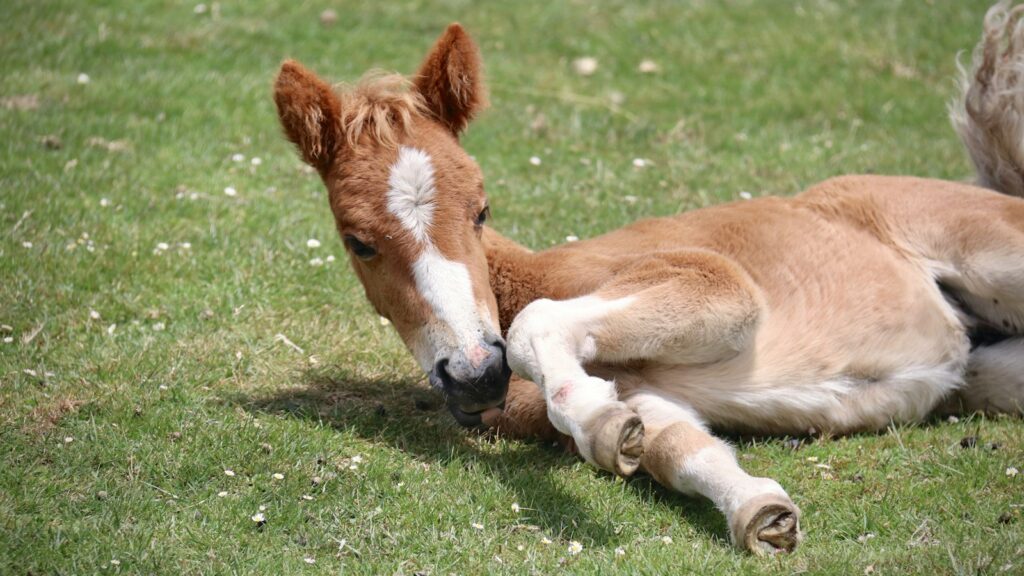
Before beginning any handling program, it’s essential to understand how foals develop both physically and mentally. Newborn foals are remarkably precocious compared to many other mammals, often standing within an hour of birth and displaying a range of natural behaviors immediately. Their brains are wired for rapid learning during the first few months of life, making this period ideal for introducing positive human associations. Foals naturally observe and mimic their mothers, using her reactions as a guide for how they should respond to new stimuli. This means that having a mare who is already comfortable with handling will significantly benefit your training efforts with her foal. Understanding that foals operate primarily on instinct rather than reason will help you approach training with appropriate expectations and techniques that work with, rather than against, their natural tendencies.
Timing Your First Interactions
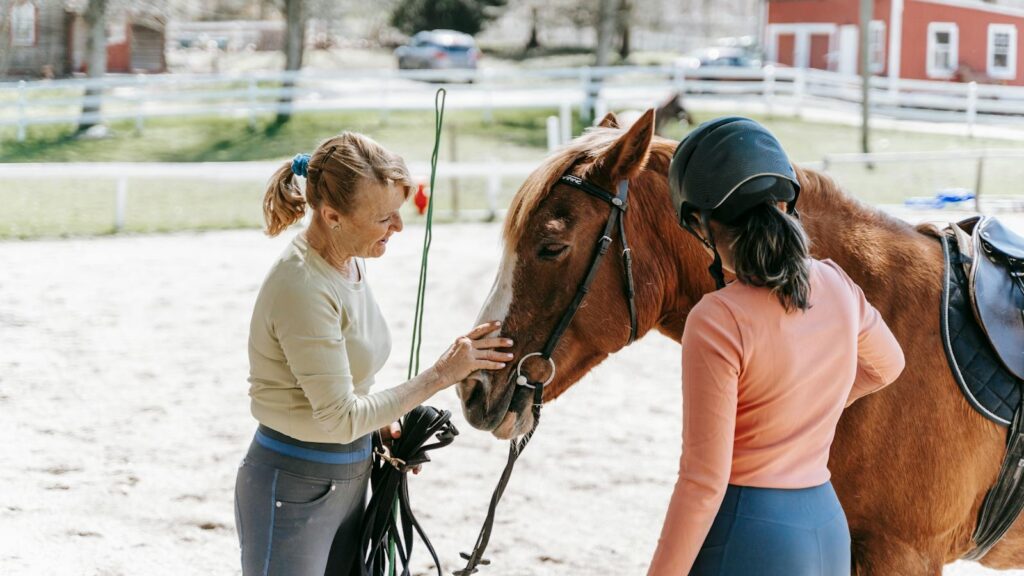
The journey of handling begins in the first hours after birth, though with important limitations and considerations for the foal’s wellbeing. Initial interactions should focus on allowing the critical bonding between mare and foal while gently introducing human presence in a non-threatening manner. Many breeding professionals recommend being present during foaling when possible, as this allows the foal to register human scent and presence from their very first moments. The first 24-48 hours should primarily involve sitting quietly in the stall, allowing the foal to approach you voluntarily, and keeping handling minimal to avoid disrupting maternal bonding. Short, positive sessions of 5-10 minutes several times daily will create familiarity without overwhelming the newborn. Remember that timing should always respect the individual temperament of both foal and mare – some pairs will be ready for more extensive handling sooner than others.
Creating a Safe Environment
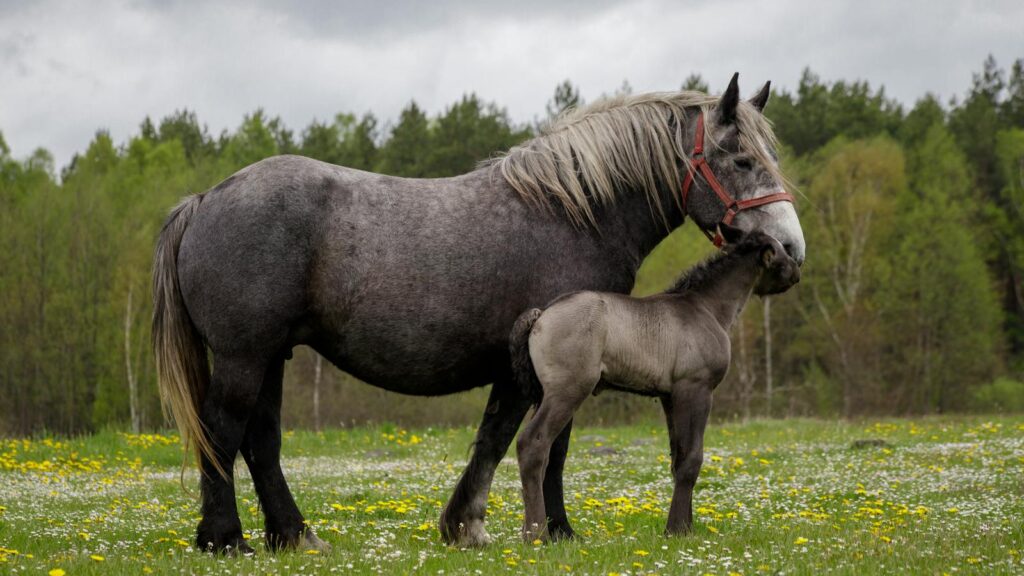
Safety must be the primary concern when working with young foals who lack coordination and experience with human handling. Always handle foals in secure, enclosed spaces with good footing and free of hazards like protruding nails, sharp corners, or items that could startle the foal. Stalls should be well-bedded to provide cushioning for potentially wobbly legs and to prevent slipping during handling sessions. When working with the foal, position yourself where you can move quickly if the mare becomes protective or if the foal becomes frightened and bolts. Never work alone with a young foal, especially in the early days – having an experienced handler manage the mare while you work with the foal creates a much safer environment for everyone involved. Creating physical safety zones using properly secured panels can provide boundaries that help both humans and horses understand safe positioning during handling sessions.
Approaching and First Touches
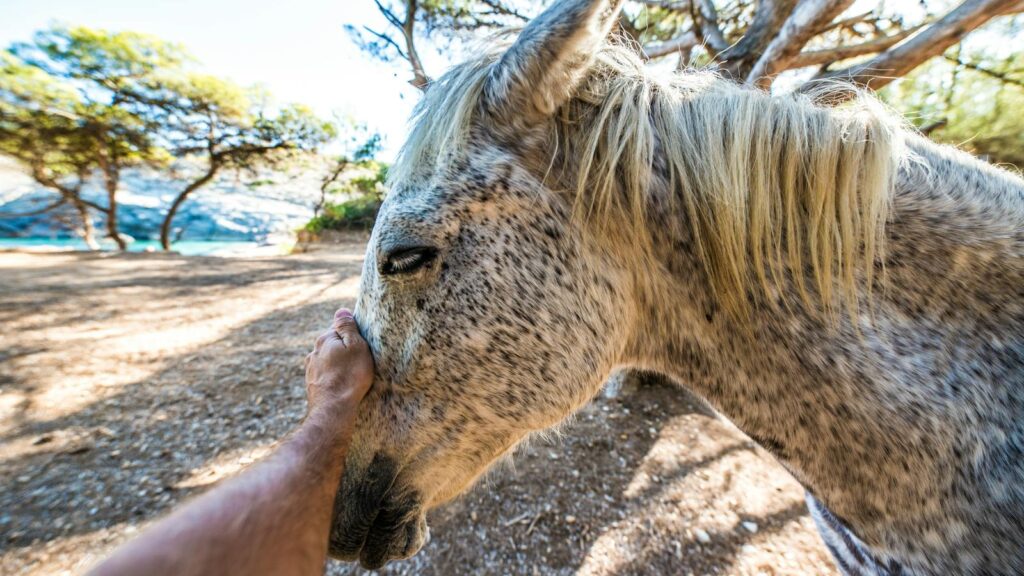
How you first approach and touch a foal establishes the foundation for all future handling. Begin by approaching from the shoulder area rather than directly from the front or rear, as this respects the foal’s field of vision and feels less threatening. Move slowly but purposefully – hesitant movements can trigger the foal’s prey instincts while overly quick movements may startle them. When first touching the foal, use a firm but gentle hand rather than light, ticklish touches that may cause discomfort or make the foal jumpy. Focus initial touching on the neck, shoulders, and withers before gradually moving to more sensitive areas like the face, legs, and hindquarters. Speaking in low, soothing tones throughout these interactions helps the foal associate your voice with calm, positive experiences and provides auditory cues that complement your physical approach.
Introducing the Halter

Halter introduction requires careful preparation and execution to avoid creating negative associations with this essential piece of equipment. Begin by allowing the foal to see, smell, and investigate the halter before attempting to put it on, which helps satisfy their natural curiosity and reduces fear. Choose a properly sized foal halter made of soft, lightweight material that won’t cause discomfort or pressure points on their sensitive head. The first fitting should be brief – just a few seconds of having the halter properly positioned before removing it entirely, gradually increasing duration as the foal becomes comfortable. Use positive reinforcement like gentle scratching in favorite spots when the foal accepts the halter, creating pleasant associations with the experience. Never leave a halter on an unattended foal, as this creates serious safety risks should the halter become caught on something in the environment.
Teaching Proper Leading Techniques
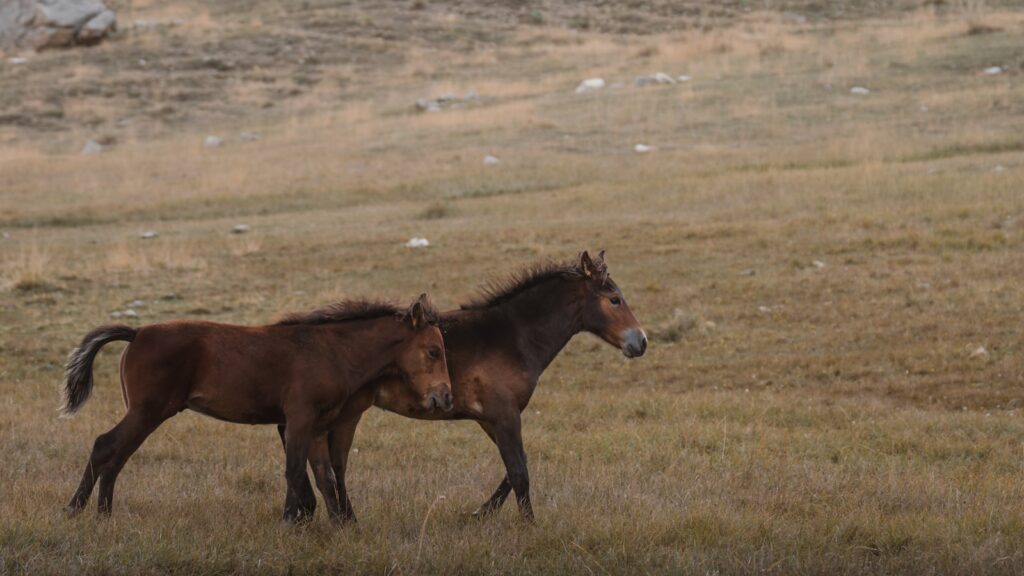
Leading a foal safely requires establishing clear communication and respect that begins well before actual leading commences. Start with teaching the foal to yield to gentle pressure on the halter by applying light pressure and immediately releasing when they take even a small step in the desired direction. Progress to walking alongside the mare while a handler guides her, allowing the foal to naturally follow while experiencing gentle guidance from their own handler. Avoid pulling or dragging the foal, which can create resistance and fear that may persist into adulthood. Instead, use rhythmic pressure and release combined with rewards for correct responses to create understanding. Keep initial leading sessions very short – just a few steps in the desired direction with immediate praise – before gradually extending the duration and complexity of the leading exercises as the foal’s confidence grows.
Handling Sensitive Areas
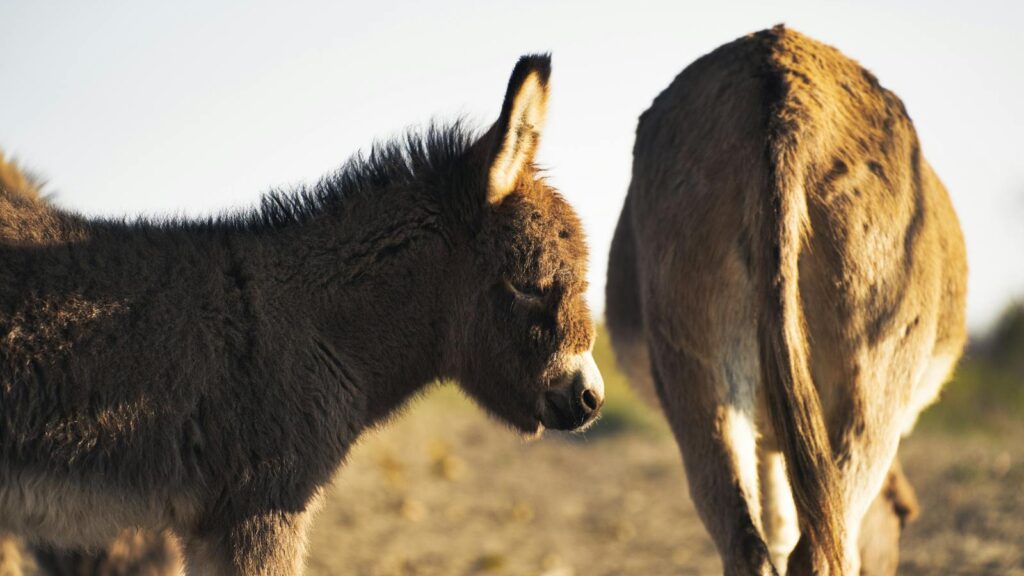
Young foals must learn to accept handling of sensitive areas like ears, muzzle, legs, and tail to prepare them for future veterinary care and general management. Begin desensitization by working from less sensitive areas toward more sensitive ones, such as starting at the neck and gradually moving toward the ears rather than reaching directly for a sensitive spot. Use firm, confident touches rather than ticklish or hesitant ones, which can increase sensitivity rather than reduce it. Incorporate handling of these areas into daily routines so they become normalized rather than unusual events that might trigger concern. Pay particular attention to handling the foal’s feet, as this prepares them for essential hoof care throughout their lives – start by briefly touching the legs and gradually work toward holding each foot for progressively longer periods.
Establishing Grooming Routines

Grooming sessions provide excellent opportunities to develop trust while teaching the foal to stand quietly for handling. Begin with your hands only, mimicking grooming motions across the foal’s body before introducing soft brushes that won’t irritate their sensitive skin. Keep initial sessions brief, focusing on making each experience positive rather than thorough. Incorporate gentle verbal cues that you’ll use throughout the horse’s life, such as “stand” or “over,” associating them with the desired behaviors during these formative experiences. Gradually introduce different grooming tools, allowing the foal to investigate each one before using it on their body. These sessions also provide opportunities to check the foal for any health concerns, teaching them that thorough body examination is a routine, non-threatening part of human interaction.
Respecting the Mare’s Role
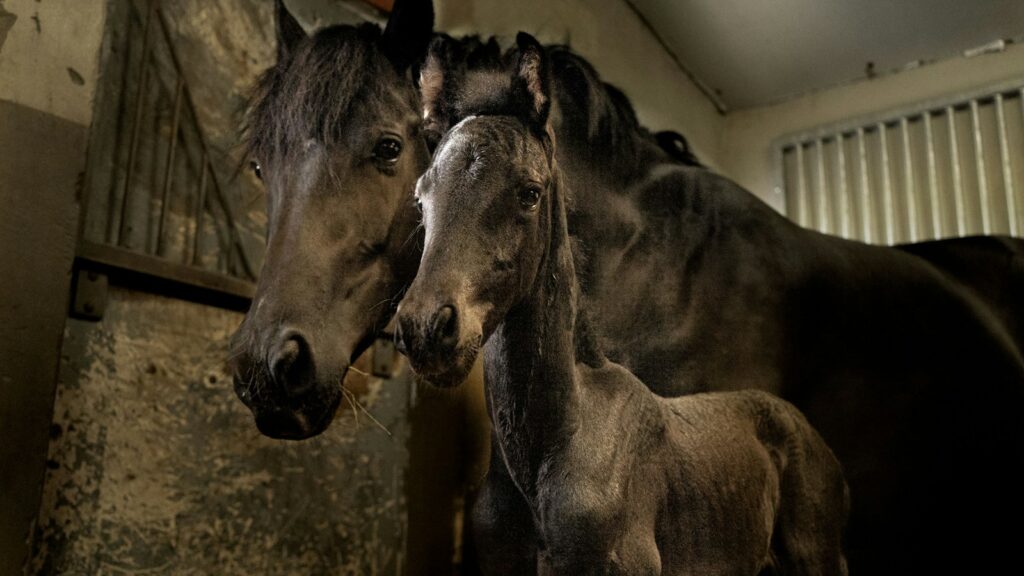
The mare plays a crucial role in how the foal perceives and responds to human handling, making her inclusion in the training process invaluable. Always consider the mare’s comfort level and protective instincts when working with her foal, as her anxiety can transfer directly to her offspring. Position yourself where the mare can see you working with the foal, which helps reduce her protective concerns while allowing the foal to gain confidence from her calm acceptance of your presence. In cases where the mare is particularly protective or anxious around humans, consider having someone offer her feed or attention during initial handling sessions to create positive associations with you working with her foal. Remember that the mare provides the foal’s primary education about the world – working in harmony with her natural teaching process rather than against it creates more effective learning opportunities for the foal.
Setting Boundaries and Discipline

While gentle handling is essential, establishing appropriate boundaries prevents dangerous behaviors from developing as the foal grows. Immediately discourage behaviors like biting, striking, or crowding your space, using quick, consistent corrections that match the severity of the infraction. Effective discipline for foals involves immediate timing, appropriate intensity, and then immediate return to normal interaction once the correction is made – holding grudges or prolonged punishment only creates confusion. Remember that foals naturally test boundaries through play-fighting behaviors with other horses; they need clear guidance about what constitutes acceptable interaction with humans. Redirect undesirable behaviors toward appropriate alternatives, such as providing suitable toys for a mouthy foal rather than simply punishing the mouthing behavior without offering an outlet for the natural tendency.
Incorporating Positive Reinforcement

Positive reinforcement creates strong, willing partnerships by rewarding desired behaviors rather than only correcting unwanted ones. Identify rewards that motivate your individual foal, which might include scratching favorite spots, verbal praise, brief periods of freedom, or small food rewards for older foals. Timing is crucial – the reward must come immediately after the desired behavior for the foal to make the connection between their action and the positive outcome. Use a consistent marker signal, such as a specific word or gentle tongue click, that precisely identifies the moment the foal performed correctly before delivering the actual reward. This training approach encourages the foal to become an active, thinking participant in the handling process rather than a passive recipient of direction, creating a foundation for more advanced training as they mature.
Managing Challenging Behaviors

Even with careful introduction to handling, foals may develop challenging behaviors that require specialized approaches. Fear-based responses like pulling back when restrained need systematic desensitization – teaching the foal that yielding to pressure results in the release of that pressure rather than fighting against it. Overexcitement during handling sessions may indicate the need for more frequent but shorter training periods that end before the foal becomes overstimulated. Persistent avoidance behaviors might signal that you’ve progressed too quickly through your handling program, requiring a step back to rebuild confidence at a more basic level. For truly problematic behaviors that don’t respond to standard approaches, consulting with an experienced trainer specializing in young horses can provide valuable perspective before small issues develop into entrenched problems.
Progressing Through Developmental Stages
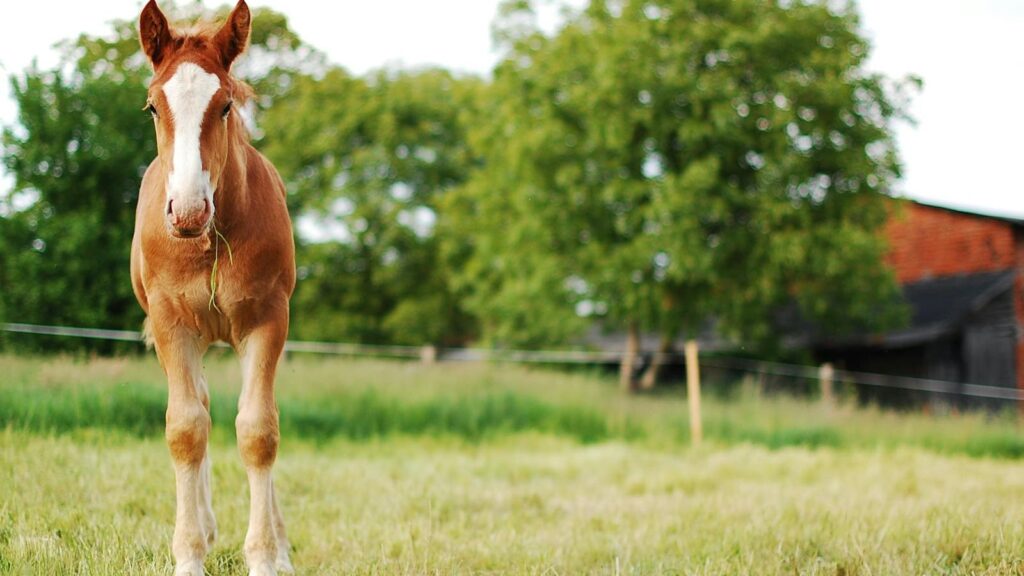
A successful handling program evolves as the foal matures through distinct developmental phases. The neonatal period (first two weeks) should focus primarily on gentle touch, minimal restraint, and positive human association rather than formal training. From two weeks to three months, basic handling skills like haltering, leading, and standing for grooming become the focus as the foal develops greater coordination and cognitive capacity. The period from three to six months often brings increased independence and testing behaviors as the foal begins to develop their individual personality and explore boundaries. Handling during weaning requires special sensitivity, providing consistent routine during a potentially stressful transition. Throughout these stages, handlers should adjust their expectations and methods to match the foal’s physical capabilities and psychological readiness rather than adhering to a rigid timeline.
Preparing for Lifelong Partnership
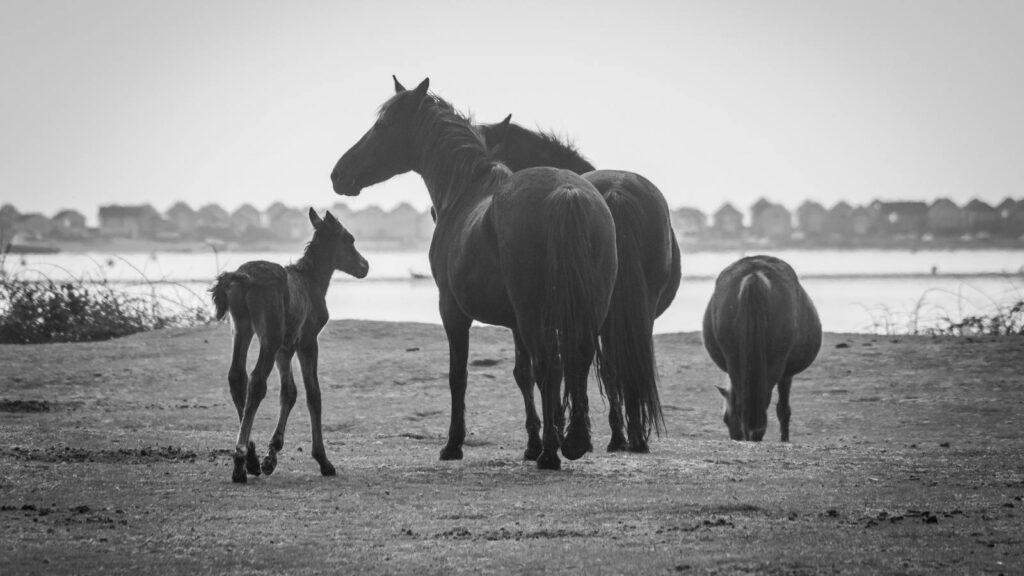
The handling foundation you establish in these early months creates effects that ripple throughout the horse’s entire life. Document your training progress through written notes or video to help you recognize patterns, celebrate improvements, and identify areas needing additional attention. Create opportunities for the foal to experience different environments, handlers, and situations while still young enough to form flexible responses to novelty. Balance structured handling sessions with ample time for natural movement and socialization with other horses, which contributes to physical and mental development. Remember that your goal extends beyond creating a manageable young horse – you’re developing a confident, willing partner who finds human interaction rewarding and comprehensible. The investment of time, patience, and knowledge during these formative months pays dividends for decades in the form of a well-adjusted adult horse who approaches human handling with confidence and cooperation.
Foundations of Effective Foal Handling
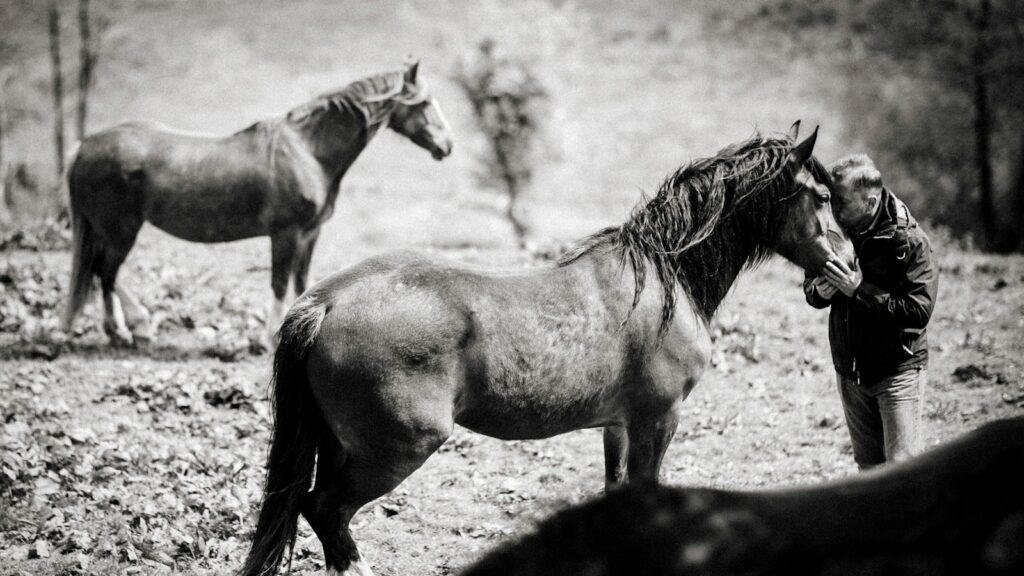
The process of introducing a foal to handling represents one of the most impactful opportunities in equine development. By approaching this critical period with knowledge, patience, and consistency, handlers create not just a temporarily manageable young horse, but lay the groundwork for a lifetime of positive human interactions. The techniques described here emphasize working with the foal’s natural instincts while gradually building their confidence and understanding of what humans expect. Remember that each foal is an individual – the specific timeline and approach may need adaptation based on temperament, but the principles of clear communication, appropriate boundaries, and positive association remain universal. When done correctly, early handling creates horses who not only tolerate human interaction but actively engage with it, setting the stage for whatever specialized training their future might hold.

